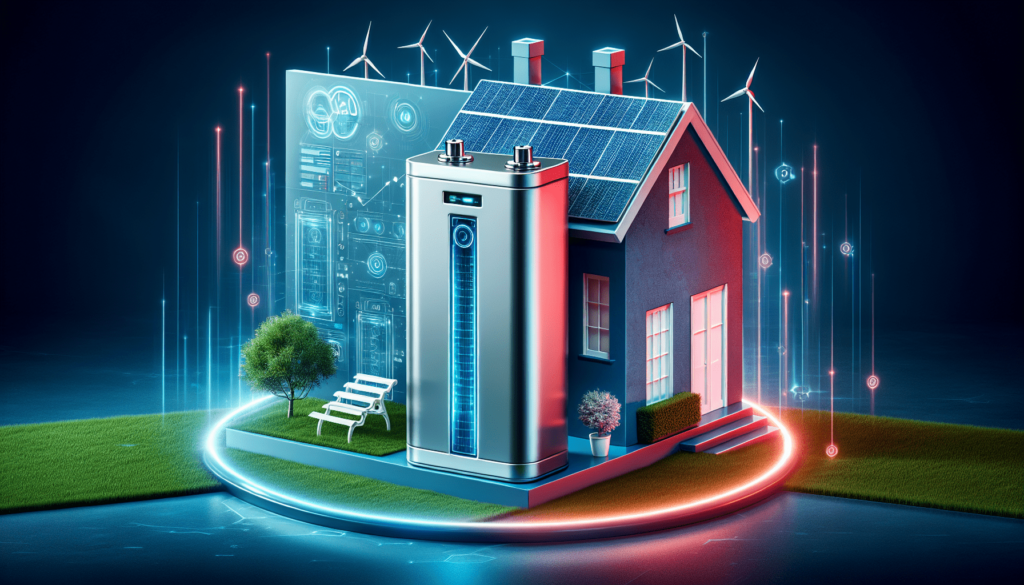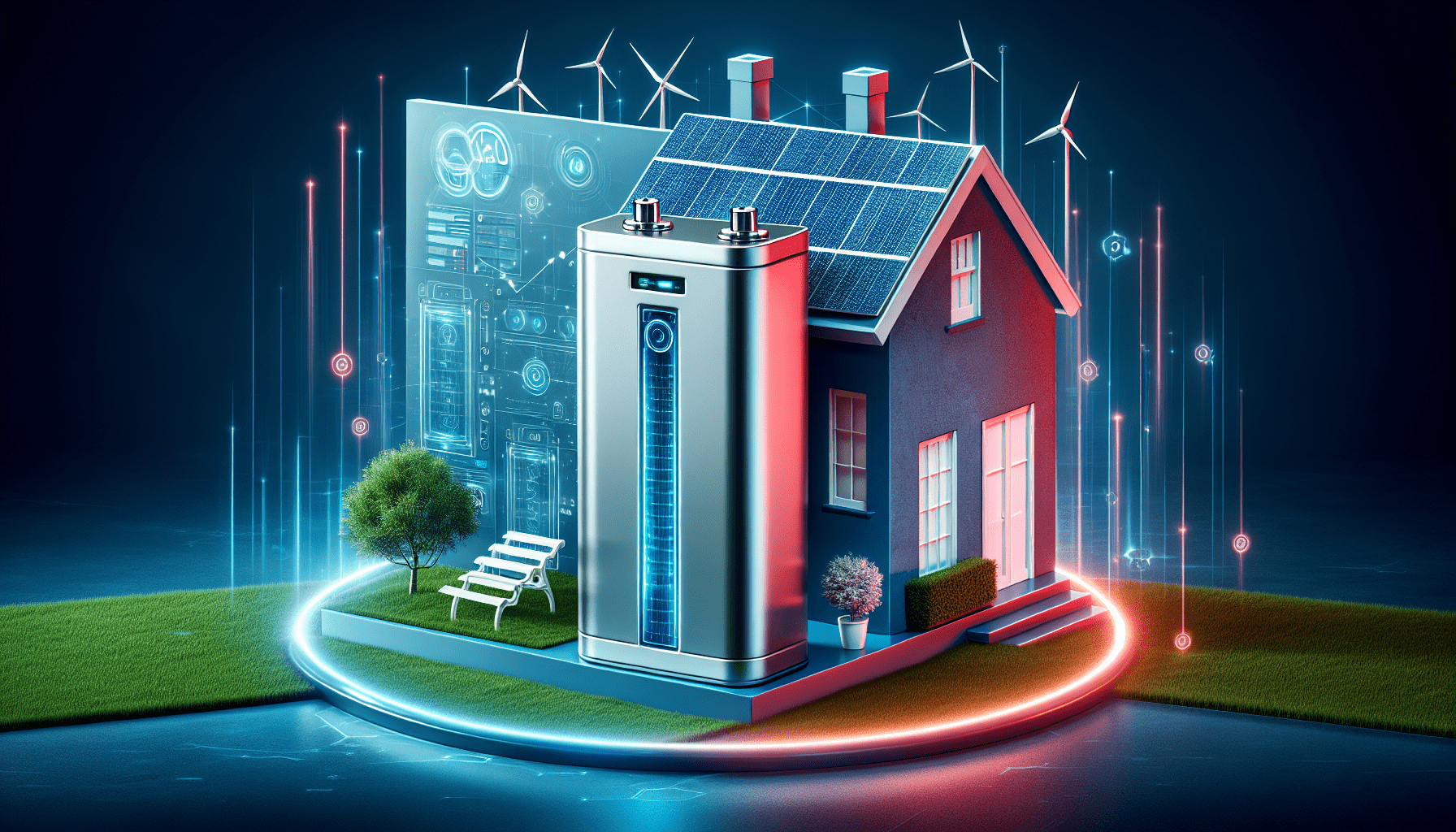Have you ever wondered how you could store excess solar energy from your rooftop panels for later use? Tesla’s Powerwall may be the answer you’re looking for. This innovative home battery solution offers a way to harness, store, and utilize renewable energy efficiently.
What is Tesla’s Powerwall?
Tesla’s Powerwall is a rechargeable lithium-ion battery that stores energy generated from sources such as solar panels or the grid. It is designed to provide backup power during outages and allows homeowners to optimize their energy usage by storing excess energy for later use. With sleek and compact design, the Powerwall can be easily mounted on a wall, either inside or outside the home.
The Powerwall comes in two versions: Powerwall 2 and Powerwall+. Powerwall 2 has a usable capacity of 13.5 kWh, while Powerwall+ offers a larger capacity of 15.4 kWh. Both versions are compatible with solar inverters and can be integrated into new or existing solar systems.
Benefits of Tesla’s Powerwall
Owning a Tesla Powerwall comes with a range of benefits that make it an attractive investment for homeowners looking to reduce their carbon footprint and energy costs.
- Energy Independence: With a Powerwall, you can become less reliant on the grid and have access to stored energy during power outages or peak demand times.
- Cost Savings: By storing excess solar energy or charging the battery during off-peak hours, you can reduce your electricity bills and take advantage of time-of-use rates.
- Environmental Impact: Utilizing renewable energy sources like solar power and storing it with a Powerwall reduces your carbon footprint and contributes to a more sustainable future.
How Does Tesla’s Powerwall Work?
The Powerwall works by storing excess energy generated by solar panels or the grid and making it available for use when needed. This process involves several steps that ensure efficient energy storage and utilization.
Charging
When the sun is shining or during off-peak hours, the Powerwall charges by storing excess solar energy or drawing power from the grid at lower rates (if connected). This stored energy can then be used to power your home during peak hours, at night, or during power outages.
Discharging
During times of high energy demand or power outages, the Powerwall discharges its stored energy to provide power to your home. This helps reduce reliance on the grid and ensures a continuous power supply when needed.
Monitoring and Control
The Powerwall comes equipped with monitoring and control features that allow you to track its performance, energy storage levels, and usage patterns. Through the Tesla app, you can monitor your energy consumption, set preferences, and control when the Powerwall charges or discharges.

Installation and Integration
Installing a Tesla Powerwall involves a few key steps that ensure proper integration with your home’s electrical system and solar setup. It is recommended to hire a certified installer to handle the installation process and ensure safety and functionality.
Initial Assessment
Before installation begins, an initial assessment of your home’s electrical system and solar setup is conducted to determine compatibility with the Powerwall. Any necessary upgrades or modifications will be made to ensure seamless integration.
Mounting and Wiring
The Powerwall can be mounted either inside or outside your home, depending on space and preference. The mounting location should allow for proper ventilation and access for maintenance. The Powerwall is then connected to your home’s electrical system, solar inverter, and the grid (if desired).
Configuration and Testing
Once the Powerwall is installed, it is configured to work with your solar system and electrical setup. The installer will test the system to ensure proper functionality, connectivity, and safety measures are in place.
Tesla Powerwall Cost and Incentives
The cost of a Tesla Powerwall varies depending on factors such as capacity, installation requirements, and any additional components needed. While the upfront cost of a Powerwall may seem high, there are incentives and rebates available that can help offset the cost and make it a more financially viable investment.
Upfront Cost
As of [current year], the cost of a Powerwall 2 starts at [insert starting price] before installation. The Powerwall+ is priced slightly higher due to its larger capacity and advanced features. Additional costs may include installation, permits, and any necessary upgrades to your electrical system.
Incentives and Rebates
Many states offer incentives and rebates for installing energy storage systems like the Powerwall. These incentives can help lower the upfront cost and provide long-term savings on your energy bills. Check with your local utility or state government to see what programs are available in your area.

Maintenance and Lifespan
Proper maintenance and care are essential to ensure the longevity and performance of your Tesla Powerwall. Regular inspections, monitoring, and upkeep help extend the lifespan of the battery and optimize its efficiency.
Monitoring and Inspection
Regular monitoring of the Powerwall’s performance and energy levels is important to catch any issues early and ensure optimal operation. The Tesla app provides real-time data on the battery’s status and usage patterns, allowing you to track performance and make adjustments as needed.
Maintenance Checks
Periodic maintenance checks by a certified installer or technician are recommended to ensure the Powerwall is functioning properly and to address any potential issues. These checks include inspecting the wiring, connections, and overall condition of the battery.
Lifespan and Warranty
The Powerwall is designed to last for many years, with an estimated lifespan of 10 years or more depending on usage and maintenance. Tesla offers a warranty on the Powerwall that covers defects in materials and workmanship, providing peace of mind for homeowners.
Is Tesla’s Powerwall Right for You?
Determining whether Tesla’s Powerwall is the right choice for your home depends on several factors, including your energy usage, solar setup, budget, and sustainability goals. Consider the following questions to help you decide if the Powerwall is a good fit for your needs:
- Do you have solar panels or plan to install them?
- Are you interested in reducing your electricity bills and increasing energy independence?
- Do you live in an area prone to power outages or grid disruptions?
- Are you committed to sustainability and reducing your carbon footprint?
If you answered yes to these questions, Tesla’s Powerwall may be a worthwhile investment for your home. Consult with a certified installer to assess your energy needs, system compatibility, and installation requirements to determine if the Powerwall is the right choice for you.
Conclusion
Tesla’s Powerwall offers a reliable and sustainable solution for storing and utilizing renewable energy in your home. With its advanced technology, sleek design, and range of benefits, the Powerwall provides homeowners with greater control over their energy usage, cost savings, and environmental impact. Consider investing in a Tesla Powerwall to take advantage of its many features and contribute to a more sustainable future for all.
